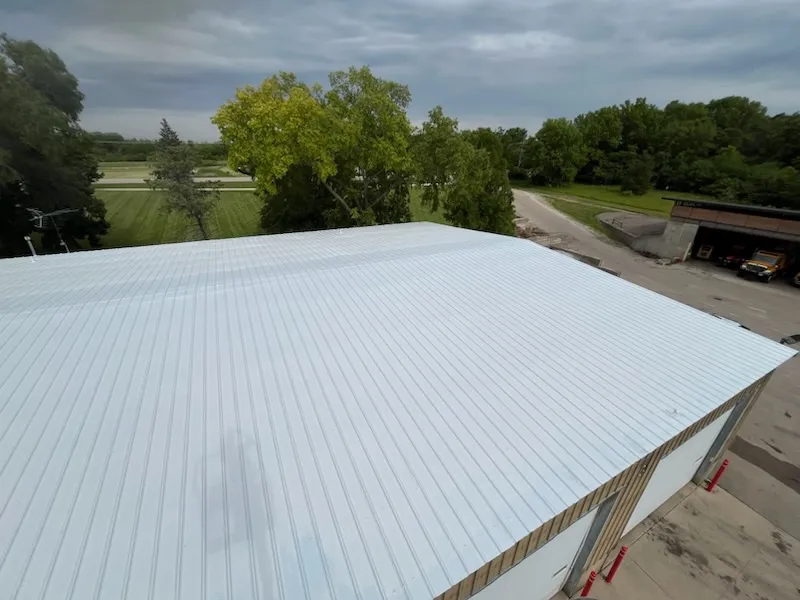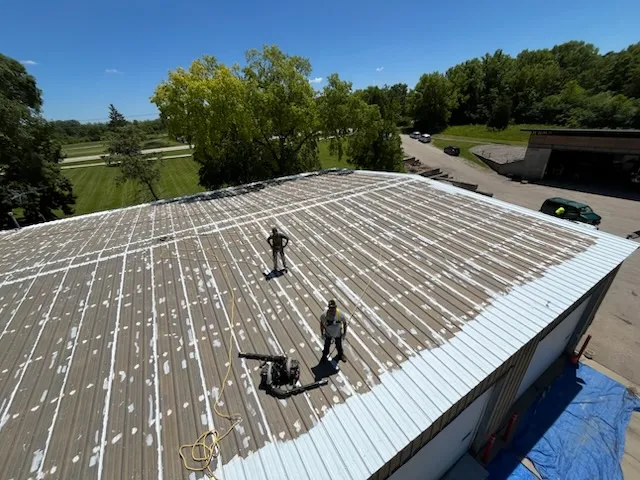
Commercial roof coatings typically last between 10 to 20 years, depending on the coating type, substrate condition, local climate, and ongoing maintenance. Acrylic and silicone coatings average 10-15 years, while polyurethane and elastomeric variants may last closer to 20 years when properly applied and maintained. UV exposure, temperature cycles, and precipitation levels significantly influence longevity.
Correct surface preparation, uniform application, and climate compatibility are the most decisive factors in coating performance. This guide outlines coating lifespans, comparative performance, application insights, and data-supported guidance from practical fieldwork.
| Coating Type | Average Lifespan | Best Use Case | UV Resistance | Ponding Water Tolerance | Recoat Interval |
|---|---|---|---|---|---|
| Acrylic | 10-15 years | Moderate climates, sloped roofs | Moderate | Low | 8-12 years |
| Silicone | 15-20 years | Flat roofs, high UV exposure | High | Excellent | 12-15 years |
| Polyurethane | 15-20 years | High foot traffic, hail-prone areas | High | Moderate | 12-15 years |
| Elastomeric | 10-18 years | All-around use, flexible applications | Moderate-High | Moderate | 10-14 years |
For flat roofs in the Midwest, silicone is often preferred due to its ability to withstand ponding water and resist UV degradation during long summer days.
| Performance Factor | Acrylic | Silicone | Polyurethane | Elastomeric |
|---|---|---|---|---|
| Elongation (%) | 250-300 | 200-250 | 150-250 | 300-500 |
| Tensile Strength (psi) | 250-400 | 200-300 | 300-600 | 200-400 |
| Application Temperature | 50-100°F | 40-120°F | 50-110°F | 45-105°F |
| Curing Time (dry to touch) | 4-6 hrs | 2-4 hrs | 4-8 hrs | 3-5 hrs |
Data sources: National Roofing Contractors Association (NRCA), Cool Roof Rating Council (CRRC), field data from 2021-2024 Midwest installations.
The lifespan of a coating depends heavily on the condition of the existing roof. Coatings applied over rusted or poorly adhered substrates fail prematurely. Surface cleaning and priming are non-negotiable steps.
In northern Illinois and the greater Chicago area, freeze-thaw cycles, lake-effect snow, and UV variability demand coatings with high elasticity and weather resistance. Silicone and elastomeric coatings handle these extremes better than acrylics.
Annual inspections, debris removal, and minor repairs extend coating life by 25% or more. Ignoring minor cracking or punctures reduces performance significantly over time.
Inconsistent thickness, missed seams, or improper cure times lead to uneven wear. Spraying yields more uniform coverage compared to brushing or rolling in most commercial settings.
In areas prone to winter snow loading, check for ice dam formations that can lead to coating blistering. Installing reflective roof coatings with high tensile strength can mitigate damage.

Schedule coatings during late spring or early fall to maximize curing quality and avoid humidity-related adhesion issues.
Most require reapplication every 10 to 15 years, depending on the coating type and environmental conditions.
Yes, if the membrane is dry, clean, and intact. Surface prep is critical.
Minimal. They reflect solar heat but don’t add R-value. Use with insulation for better results.
Base the choice on climate, roof slope, water pooling, and traffic levels. Consult data and local codes.
Need guidance on selecting and applying commercial roof coatings suited to Chicago’s climate? Contact South Chicago Insulation for practical solutions and code-compliant options.
Phone: (779) 803-8025
Email: [email protected]
It can lead to leaks, energy loss, and substrate damage. Proper application and maintenance reduce this risk.
Only in controlled conditions. Cold weather slows curing and can cause adhesion failure.
Minimal. Most coatings allow foot traffic within 24-48 hours, making them viable for active buildings.
No, but ensure vents, HVAC units, and drains are masked properly during application.
Many are low-VOC and meet cool roof standards. Silicone and acrylics are generally more sustainable.